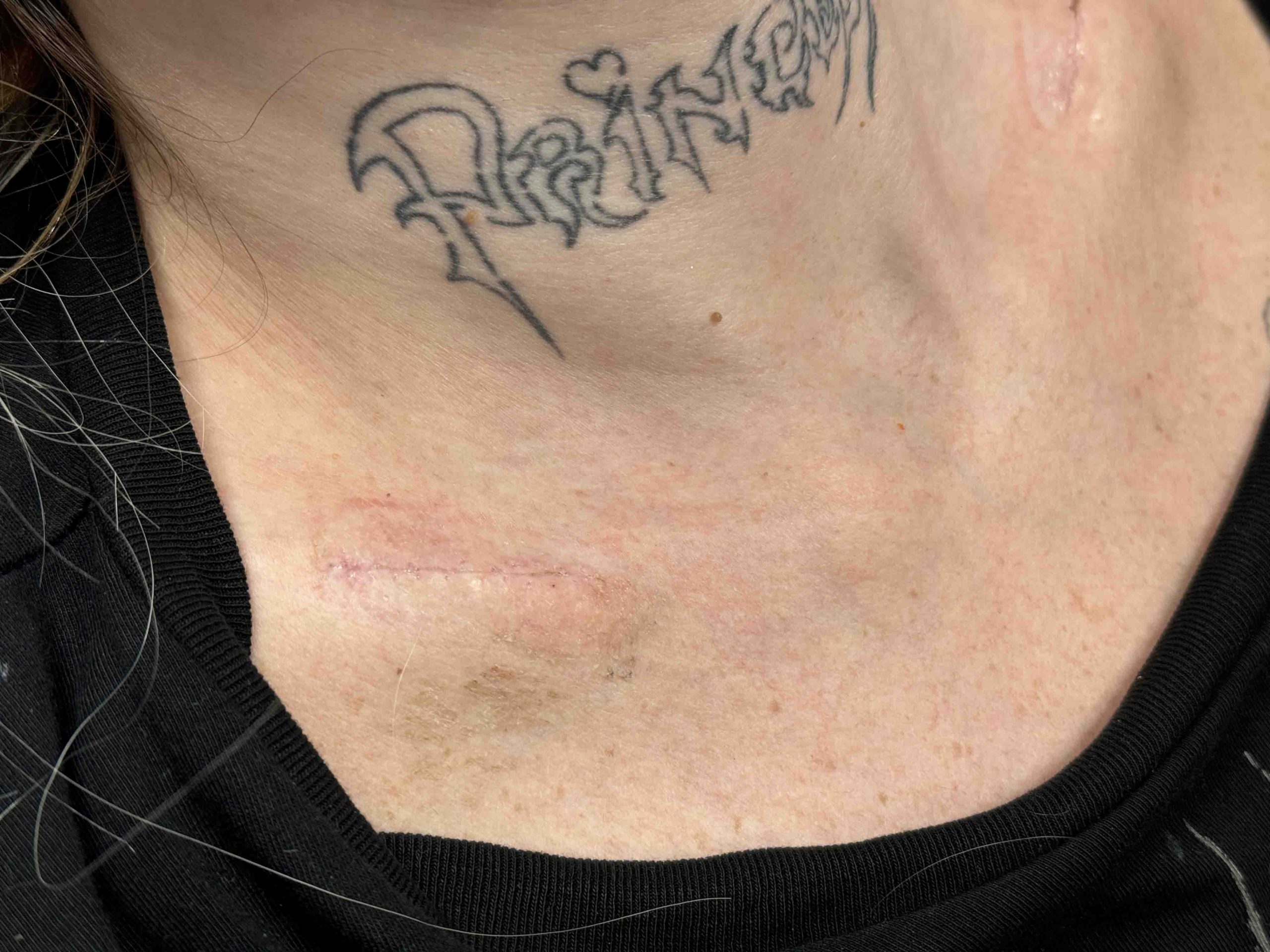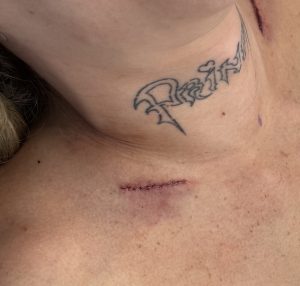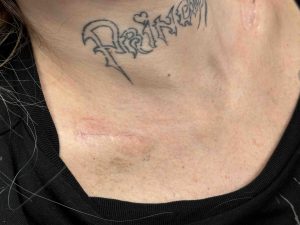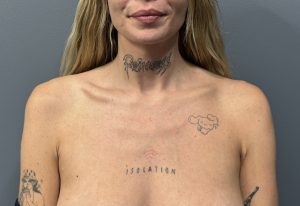Shoulder narrowing surgery is an aesthetic procedure in which the incision and its final appearance has significance. While in fracture repair a long incision is used across the front of the clavicle with a significant scar, such an approach scarring in shoulder narrowing would not be acceptable to most patients. (even though it makes the surgery a lot easier) As a result a much shorter and more ‘hidden’ incision is its ed behind the clavicle in the supraclavicular fossa.
The supraclavicular fossa is a triangular depression above the clavicle at its inner half in the lower neck. Its almost right angle triangular borders include the sternocleidomastoid muscle medially, the clavicle bone inferiorly and the trapezius muscle laterally. Because it is an indentation a small incision can be placed behind the clavicle at its base for access to perform the bone removal. I can’t say that it is completely hidden but at least it is better than putting it own the front side of the clavicle bone.
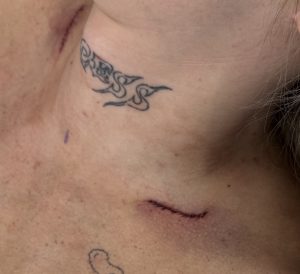


Barry Eppley
World-Renowned Plastic Surgeon

